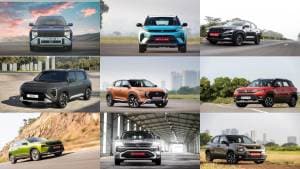Nissan Magnite 1.0 turbo road test review
The Magnite is Nissan's make-or-break product for India and is probably their most important launch in the country since the Micra that established the Japanese brand in the minds of the masses. It is a sub-4m crossover that is priced lower than most superminis, but that price to size ratio isn't the only facet that the Nissan Magnite is banking on. It is peppy, brimming with features and comes with the Japanese promise of being reliable. So how does it all add up? Will the Nissan Magnite be as magnetic as its name suggests? Read on.
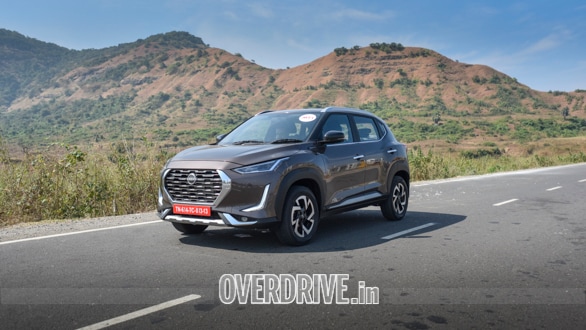
Design
The low-cost tag often repels the Indian buyer no matter what their pocket-size - case in point, the lukewarm response that was met out to low-cost engineering marvels like the Tata Nano or Nissan's own, Datsun line up. Those learnings are the reason why you see the more premium Nissan badge on what otherwise looks like a Datsun grille. In fact, the Nissan Magnite was originally conceived to be a Datsun which is why you even see the facial resemblance with the Redi-Go. But honestly, that design looks far better for the Magnite's size. They have even chosen the same shade of brown that is used on Nissan's premium Infinity brand of cars. Furthermore, the Nissan Magnite has LEDs in the fog lamps, daytime running lamps, and the headlamps - a feature that is usually considered to be premium. The latter isn't some cheap aftermarket lamps either - their spread and throw hardly leaves a room for complaint.
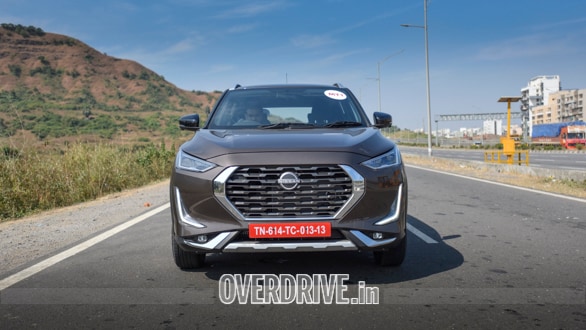

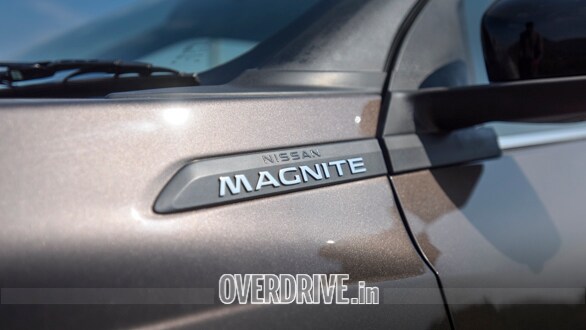
There are no LEDs at the rear but the taillights are designed wisely to mimic the look. To ensure that the tail looks as sophisticated as the front, the Nissan Magnite has gone with a layered look for the rear bumper and a crease on the tailgate with the spaced model lettering. The rear has strong hints of the Nissan Kicks - more so if you look at the chunky D-pillar or the treatment given to the rub rails. But unlike the Kicks, the Nissan Magnite doesn't have a receding roof or a pinched effect the rear. It goes with relatively more upright proportions to look more SUV and less hatchback in its crossover form.
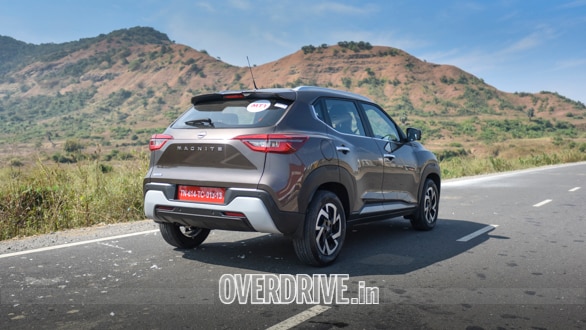

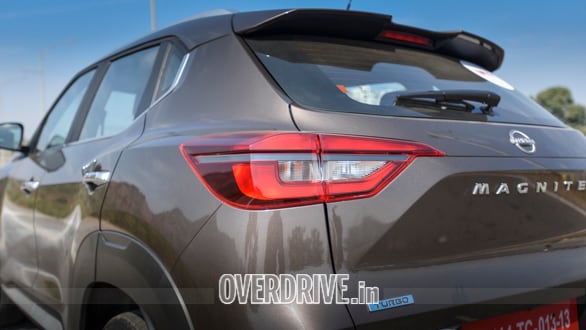
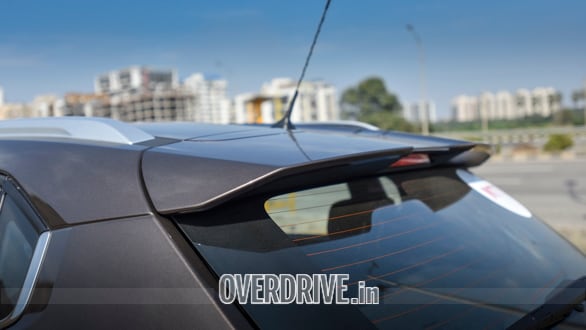
The Nissan Magnite rides on a shorter wheelbase than the Renault Triber - the car it shares its CMF-A platform with, but its length is comparable to sub-4m cars like the WR-V and the Nexon. The boot is more on less in the hatchback territory with its 336l capacity and the seats can be dropped in a 60:40 split for additional versatility. Under the boot is a space-saver spare wheel, and the car rides on 16-inch machined alloys in the top-spec trim seen here.
The side profile also shows off some nicely done details like squared-off wheel arches and the window trim that extends towards the bonnet to incorporate the Magnite badging to highlight a high shoulder line that adds the visual sense of this being a tall crossover.
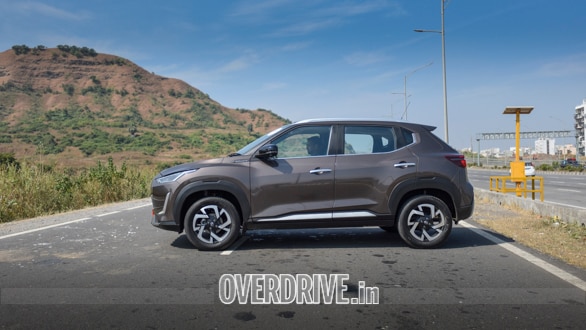
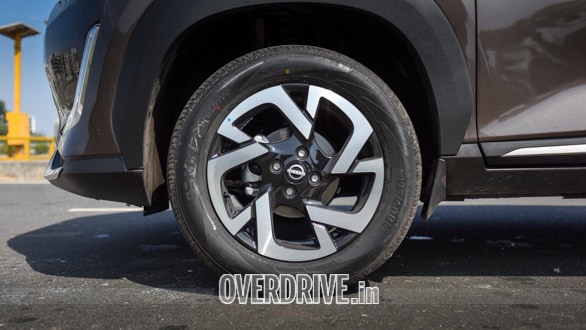
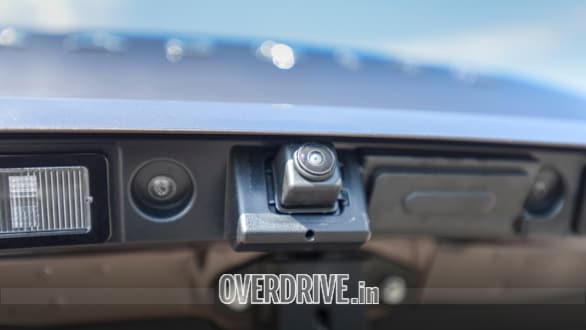
Cabin, space and features
The tall roof of the Nissan Magnite ensures easy ingress and egress and you will be amazed at the rear seat space. The knee room is better than most hatchbacks and comparable to some of the premium sub-4m crossovers even. The front seats are set high liberating a generous foot space at the rear. The headspace is roomy too and even a 6 footer should be at ease in here. The windows are nice and large and compartmented by rear quarter glasses, making the cabin feel airy despite the dark upholstery and the lack of a sunroof. The floor is pretty flat, and so are the rear seats, but the shoulder room is good for two adults and a kid. I'm glad to see adjustable headrests in all four corners, which makes for good comfort and safety.

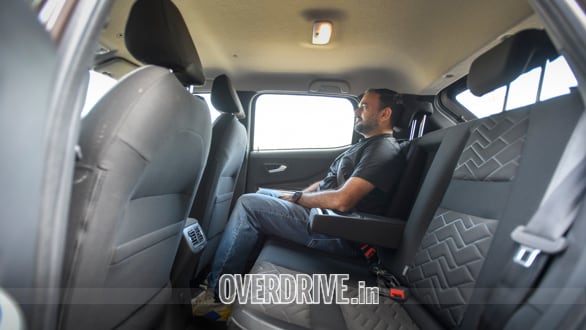
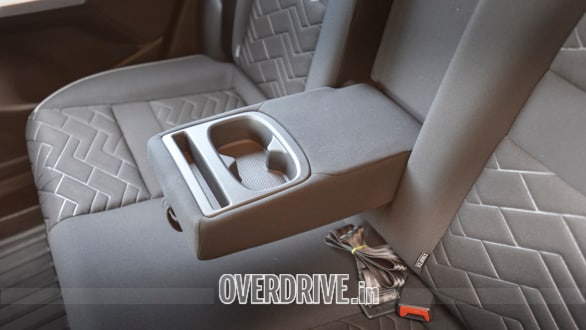
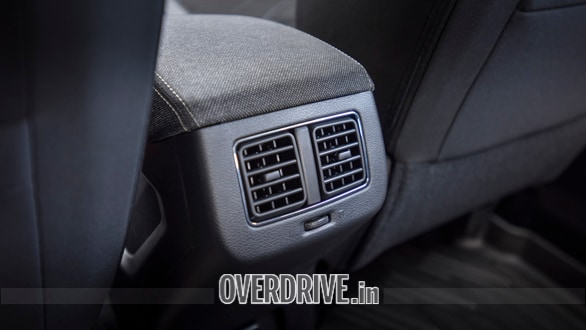
All the seats are quite softly cushioned though, and our day-long drive didn't feel very comforting by the end of it. The Nissan Magnite's safety features include frontal airbags, ABS with EBD and Isofix child-seat mounts, but for this price point, it's nice of Nissan to throw in a 360° camera and a low-line tyre pressure monitoring system. There is also a puddle lamp from the front door, and while entry to the front seats is easy, you will likely to hit your knee against the awkwardly large speaker housing while exiting the front doors.
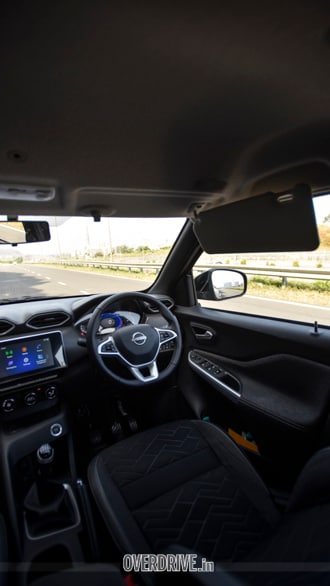
Like in the rear, 'space' is the first keyword that comes to mind when you enter the front of the cabin. From 1l bottles and cups holders in the tunnel console to cubby holes for kick-knacks and wired gadgets - there is room for most of the necessities you will take to the car. The Nissan Magnite continues to impress with a wireless charging pad and wireless Apple CarPlay or Android Auto as well! The 8" touchscreen infotainment is laggy but has a simple, easy layout and I like the fact that you can set individual audio levels for music, radio, telephony, navigation etc. The 7" July digital instrumentation is impressive too, made up of vibrant (not gaudy) colours, cool animations and easy to read instruments.
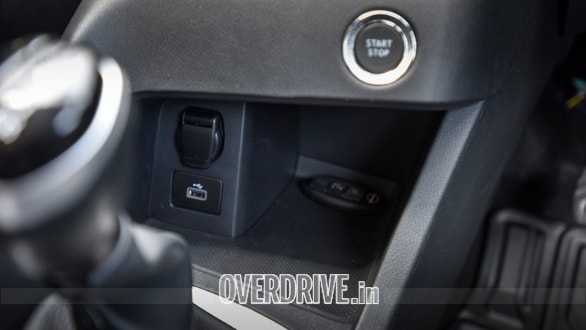
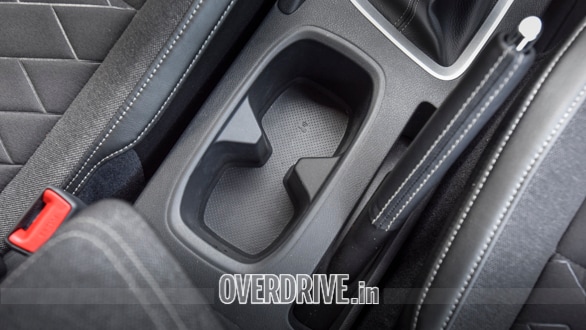
The dashboard is tilted five degrees towards the driver's seat to keep the controls and storage spaces within easy reach. Common touchpoints on the dash and the commonly used switches are done up in relatively nice materials, but the not-so-common areas feel quite low-rent in comparison and highlight a stark difference. Like the glovebox for example, which has inconsistent shut lines, which showed scuff marks on our test car and had constant, annoying rattles.
We will let this pass because these are pre-production prototypes handed out for our tests. But what is commendable is what Nissan has managed to create and pack at this price point.
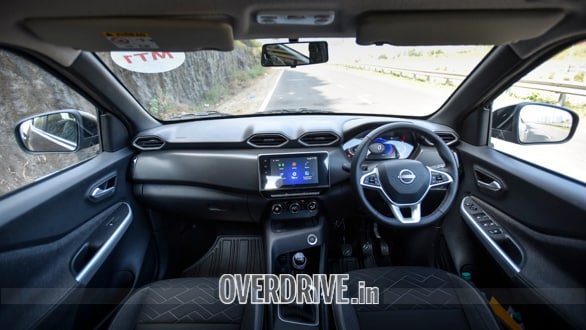
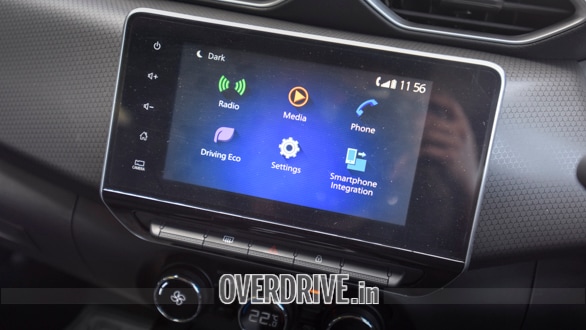
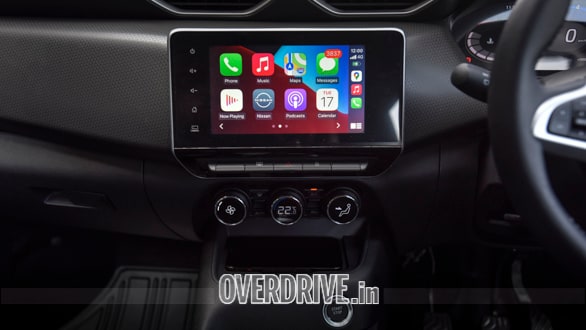
Engine and driving dynamics
The Nissan Magnite comes with two engine options - a 1.0l naturally aspirated petrol engine from the Renault Triber and a 1.0l turbo-petrol that is sparkling new and the one we've driven. It comes to life with a thrum and settles in an idling speed of 900-1,100 revs. It emits mild pulsations through the floor and has noticeable pedal vibration typical to a three-cylinder motor and I expect the naturally aspirated counterpart to wake up in a similar fashion.
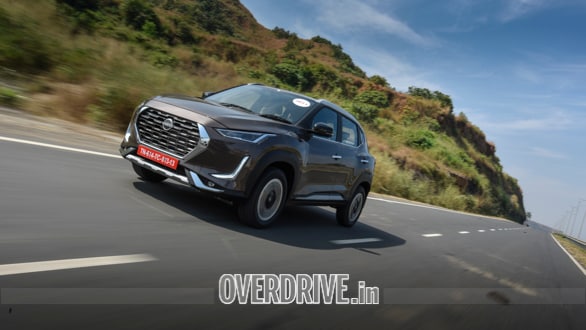
The vibrations smoothen out as the speeds rise, though. The engine does have a noticeable turbo-lag under 2,000rpm but it's only evident at moderate city speeds when you dial in the torque to negotiate a gap in traffic. Otherwise, on the highway, the performance is brisk and you are usually in the meat of the powerband to be able to pull overtakes without having to downshift. The comfort zone for this engine is between 2-4,000rpm and it is only with a full house and especially on inclines, that you will need frequent gear changes or need to keep the engine at higher revs to ensure a smoother performance.
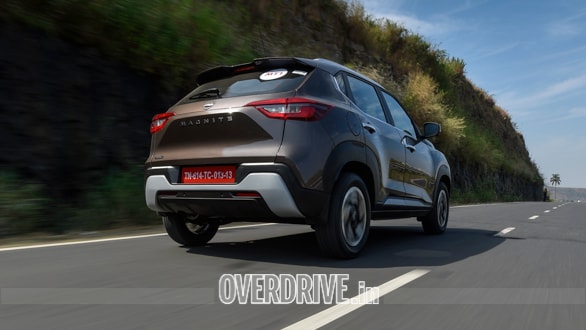
The Nissan Magnite turbo cruises at 100kmph in top gear at about 2,200rpm so highway cruising or slow city commutes seem pretty relaxed for this engine. That also reflects in its fuel economy. We didn't get a chance to sample the less powerful, naturally aspirated engine, and while our time with the Renault Triber tells us that the engine will have adequate performance for city use, it is the turbo variant that we would strongly recommend for all-round performance.
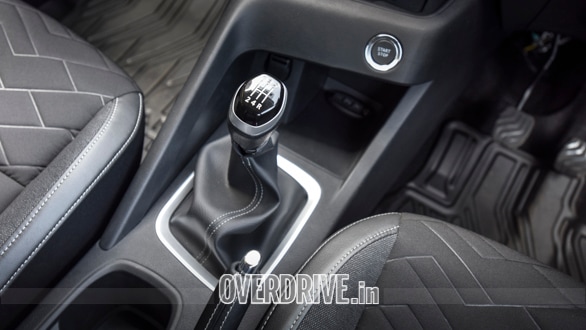
The turbo can be had with a CVT automatic or a five-speed manual. The manual has a light clutch, but the pedal travel is quite long and can get cumbersome in the bumper to bumper traffic. The gear stick has long throws and a clunky feel to it and there is a prominent powertrain lash that's felt in the stick. The automatic is the latest generation CVT from Nissan but isn't as well-tuned as the CVT we have experienced in some other sub-4m cars like the Honda Amaze for example. The Nissan Magnite has a more pronounced rubber band effect, but it is evident only on the highway and not so much in the city. The CVT also claims better economy, but we couldn't put that to the test. The manual has an impressive economy though, and even the 0-100kmph figure isn't too bad.
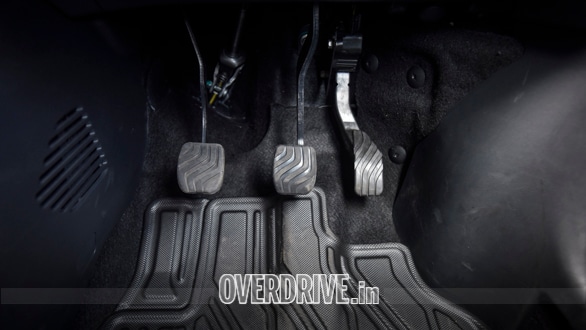
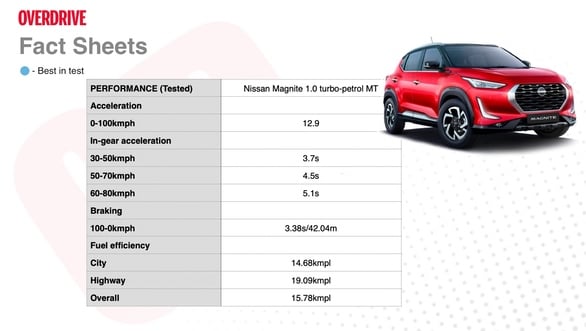
The Nissan Magnite is fairly lightweight, tipping the scales between 950-1050kg. No wonder the engine feels so sprightly! But alas, the dynamics don't complement the engine's eagerness. The Magnite rides on a squishy suspension which makes for lots of vertical movement and outer lean when tackling bends. Cornering or braking at higher speeds is quite unnerving and the vague steering feedback only dampens the feeling further. Most will treat the Magnite as an urban crossover though, and when you do drive in a calm and composed manner, the Magnite will be an obedient daily driver. The soft suspension has its advantages in a supple ride at city and highway speeds, but the suspension is loud and noisy over ruts and joints.
In a nutshell, then, the Magnite has decent figures to boast of, but its dynamics aren't as confidence inspiring as most of the premium sub-4m crossovers. But as an urban crossover, it does its job rather well and the price you pay for it won't make it feel like a compromise.
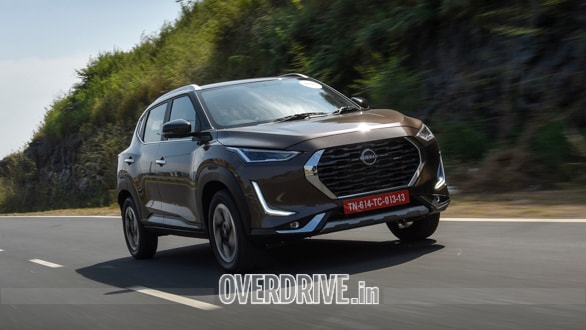
Verdict
Over a decade ago, this much money only got you a Micra and today it affords you a sub-four-meter crossover that is brimming with features. Of course, it doesn't match up to the quality levels of rivals that reside at almost double the price, but what you get in the Nissan Magnite is worth a lot more than the asking price. It is a good alternative to hatchbacks and compact sedans if you seek a relatively higher seating position, and all that remains to be seen is how the Magnite ages, but knowing Nissan's expertise with frugal engineering, we have great expectations from this one.
Starts Rs 5.59 Lakhs
999cc
CVT
100
152
17.7 Kmpl
Starts Rs 6.32 Lakhs
1498cc
Manual
90
200
21 Kmpl
Starts Rs 9.5 Lakhs
1330cc
CVT
156
254
14.23 Kmpl
Starts Rs 5.3 Lakhs
999cc
AMT
72
96
20.5 Kmpl
